US, UK Do ‘Groundbreaking’ Drone Exercise Off Scotland
Posted on
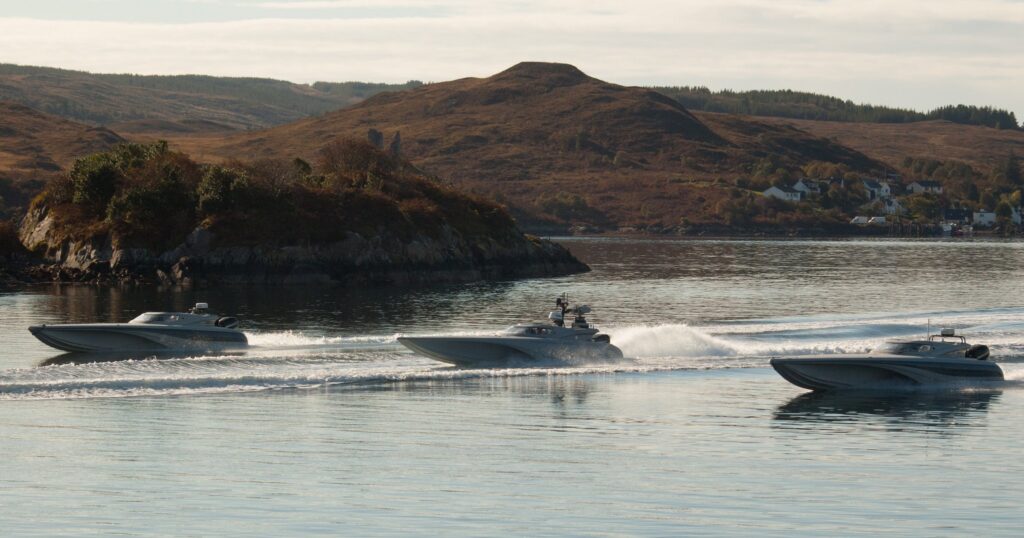
Royal Navy Bladerunner unmanned boats in formation during Unmanned Warrior 2016.
The multinational Unmanned Warrior exercise off the coast of Scotland is doing “really groundbreaking” work on naval drones, said one participating US scientist. There’ve been “a number of world firsts” in networking unmanned vehicles of different types and from different nations into a single unit, Marcus Tepaske, science advisor for the Office of Naval Research, said.
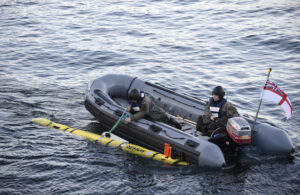
Royal Navy sailors deploy an unmanned underwater vehicle in Unmanned Warrior 2016.
At last count, the US, UK, and other allies had networked 10 different unmanned vehicles — aerial drones, robot boats, and autonomous mini-subs of various sizes — but they keep adding more, Tepaske told reporters in a trans-Atlantic conference call. Networking matters because, just as manned ships, subs, and aircraft work together in a fleet, different robotic systems have different strengths and weaknesses, and used in concert they become more than the sum of their parts:
- Unmanned Aerial Vehicles can move the fastest, see the farthest, and can communicate most easily over long distances, but they burn fuel fast and can’t see what’s underwater very well.
- Unmanned Underwater Vehicles can have staggering endurance — up to 30 days for “glider” UUVs that coast on currents — but they’re slow. They’re right there in the water with enemy mines and submarines, but water also blocks long-range communications, so UUVs struggle to report what they’ve found.
- Unmanned Surface Vehicles can have decent endurance and speed, since they can use well-proven small-boat engines and even hulls. Their position on the surface lets them act as a mothership and communications hub. While they have neither the close-up underwater view of UUVs nor the wide birds-eye view of UAVs, USVs can communicate with both, acting as a relay between underwater and aerial systems that would have trouble connecting with each other directly.
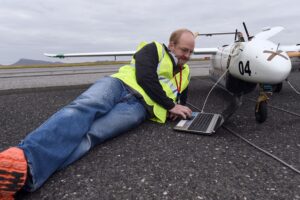
Navy physicist Jeffrey Bowles checks data from a drone at Unmanned Warrior 2016,
But connecting these disparate systems isn’t simple. In Unmanned Warrior, Tepaske said, three countries that used the same UUV software discovered they had different versions of the program that didn’t work well together, which they had to fix hastily on the spot.
Some problems couldn’t be fixed in time. The British hosts had an overall command-and-control network set up, and “their vision was that everyone who would participate in this exercise would be able to plug in,” Tepaske said. “When everyone got into country, they weren’t able to fix all the glitches.”
That said, one significant sidebar to the field exercise was several days of workshops on international interoperability. Both that discussion and the hands-on experience finding fixes on the spot will contribute to the development of international standards, said Tepaske’s aides.
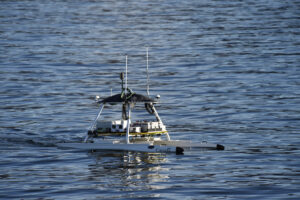
A Canadian unmanned surface vessel at Unmanned Warrior 2016.
As for the British, they’re using Unmanned Warrior to scan the waterfront of potential unmanned systems. While the exercise isn’t a test event for any acquisition program, it shows the art of the possible, said Royal Navy Commander Peter Pipkin, the Fleet Robotics Officer.
“There are indeed some slightly more mature technologies coming as well that might also offer us the opportunity to do something more quickly,” Cdr. Pipkin told reporters. “I wouldn’t want to give you an answer yet, (but) one of our opportunities may well be to take something that’s been developed and may even be in use in the commercial sector” — without, he added, piling on military-specific requirements to make a costly “bespoke” system.
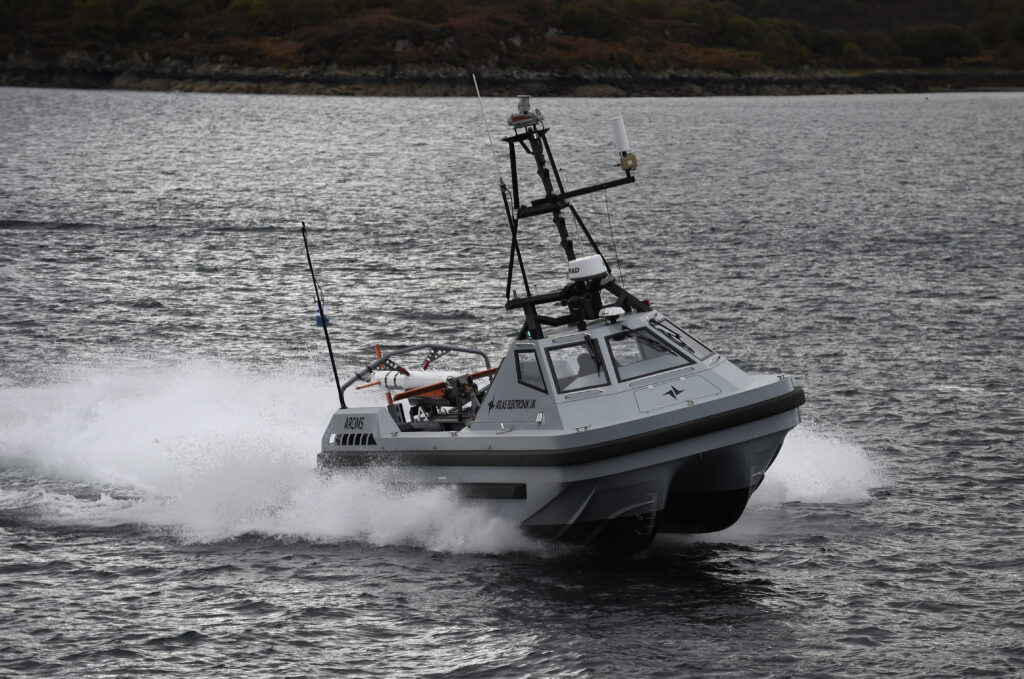
An unmanned surface vessel equipped for minesweeping at Unmanned Warrior 2016 off Scotland.
Subscribe to our newsletter
Promotions, new products and sales. Directly to your inbox.
